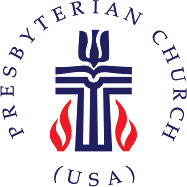Posted each Thursday, Lectionary Ruminations focuses on the Scripture Readings, taken from the New Revised Standard Version, for the following Sunday per the Revised Common Lectionary. Comments and questions are intended to encourage reflection for readers preparing to teach, preach, or hear the Word. Reader comments are invited and encouraged. All lectionary links are to the New Revised Standard Version (NRSV) of the Bible via the PC(USA) Devotions and Readings website, but if you prefer another translation, feel free to use that instead. (Other references may be linked to the NRSV via the oremus Bible Browser.) Lectionary Ruminations is also cross-posted on my personal blog, Summit to Shore.
I have been posting Lectionary Ruminations to Presbyterian Bloggers for nearly three years. I will attempt to continue posting through the Readings for February 10, 2013, Transfiguration of the Lord. I may continue posting Lectionary Ruminations to my personal blog, Summit to Shore but not here. If you have been following my Lectionary Ruminations on Presbyterian Bloggers, please migrate over to my personal blog.
62:1 Who is speaking?
62:2 What is the
significance of a new name?
62:3 What is a diadem?
62:4 What is the meaning of
married land? Does this metaphor justify
this passage being paired with John 2:1-11?
62:5 Does this verse inform
any New Testament metaphors?
36:5 Where does the LORD’s love extend from?
36:6 Is this just a poetic
way of saying height and depth? Do dogs
and cats and other animals and pets have to be baptized or born again to be
saved?
36:7 What sort of avian
creature is God being likened to?
36:9 Does this lead to
myths and legends about the fountain of youth?
How do we see light in light? Do
we see light, or what light illuminates? Is light a wave or a particle?
36:10 So God’s steadfast
love does not extend to strangers?
12:1 Are most Christians
today informed or uninformed about spiritual gifts.
12:2 Is this a valid
portrayal of paganism? What is the
difference between Paganism and Atheism? Agnosticism?
12:3 Really?
12:4 Why am I thinking
about Isabel Briggs Myers?
12:4-6 Is there any scheme
at work here: gifts-Spirit, services-Lord, activities-God?
12:8 What is the difference
between wisdom and knowledge?
12:8-10 Was this list meant
to be exhaustive or just suggestive?
2:1 How does this passage
foreshadow the resurrection? Why is the
mother of Jesus not named? Who do you
think was being married?
2:3 Is she stating the
obvious? Why tell Jesus? Did he not already know?
2:4 Why does Jesus address
his mother as “Woman”? What “hour” is he
referring to?
2:5 What gave the mother of
Jesus the right and authority to tell the servants what to do? Maybe she was catering the reception. Is “servants” a play on words? Do the disciples always do what Jesus tells
them?
2:6 Is there any
significance in the number of jars? Does
the number of jars matter? What are the
jewish rites of purification?
2:7 Does this assume that
the jars were empty? Does it make a
difference? Is there any significance
that the jars were filled to the brim?
2:8 Did the servants draw
out water or wine? Who and what was the
chief steward?
2:9 This reads as if the
servants drew water out of the jars but that the water turned to wine as the
servants were taking it to the steward.
2:10 Why serve good wine
first and then inferior wine?
2:11 If this was the
“first” of his signs, how many were there and what were they? Is there any significance to “Cana if
Galilee” being mentioned twice? What do
you know about Tabgha? Was his glory
hidden before this? Did his disciples not
believe in him before this?
2:1-11 This is one of my
favorite passages in my favorite Gospel.
I think it could several sermons to unpack, interpret, and apply
it.
ADDENDUM









No comments:
Post a Comment